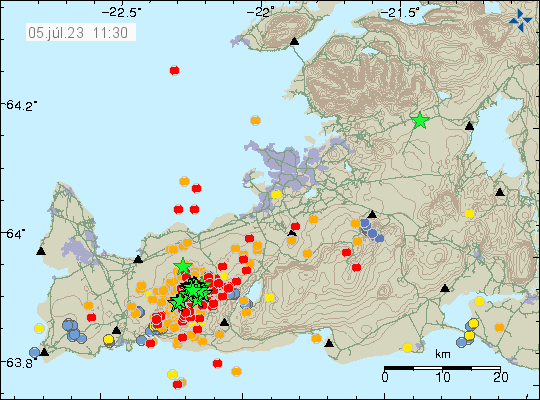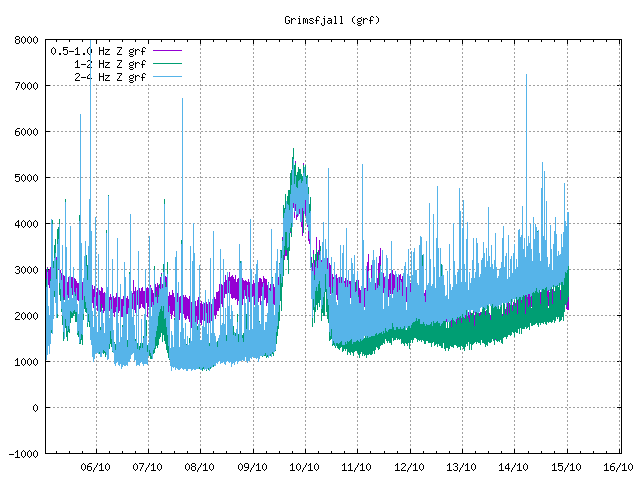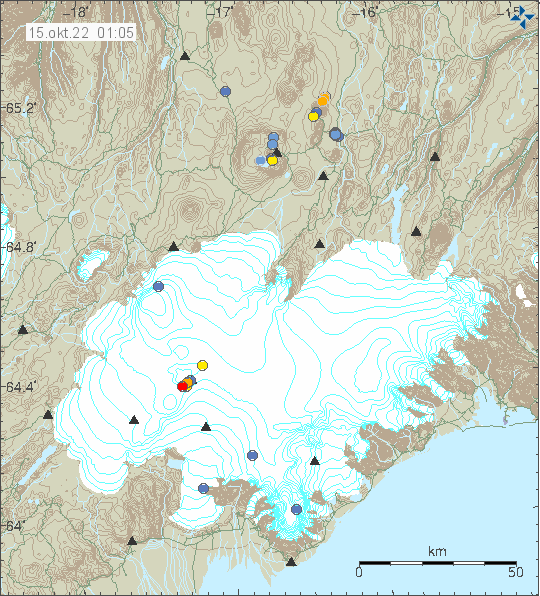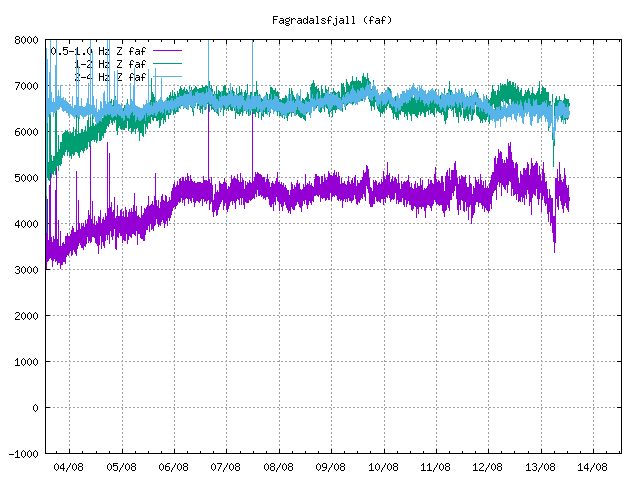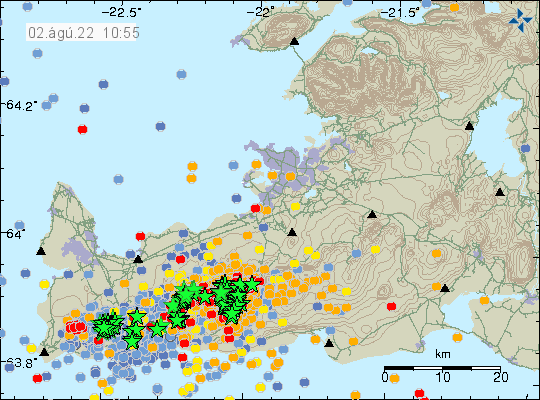This is a short update since there is a lot going on.
- Largest earthquake recorded at the writing of this article is Mw4,8 from earlier this morning.
- Larger earthquakes are growing in numbers. There is now also a warning for possible Mw6,3 earthquake on Reykjanes peninsula following this earthquake swarm and dyke intrusion into Fagradalsfjall mountain.
- The dyke intrusion is coming up just south of Keilir mountain.
- Based on what I am seeing, it is possible that current dyke intrusion into Fagradalsfjall mountain is larger than the first eruption in March 2021. If this is accurate is a wait and see situation until an eruption starts.
- It is possible to view the earthquake activity in real time here, at Raspberry Shake website.
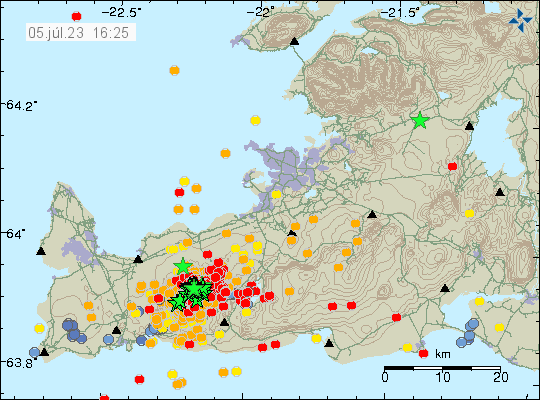
All data now suggest that an eruption is going to happen. Where it is going to start erupting is impossible to know and it is not possible to know when it is going to start erupting.
I’ll try to post update when more is known about what is going on.

